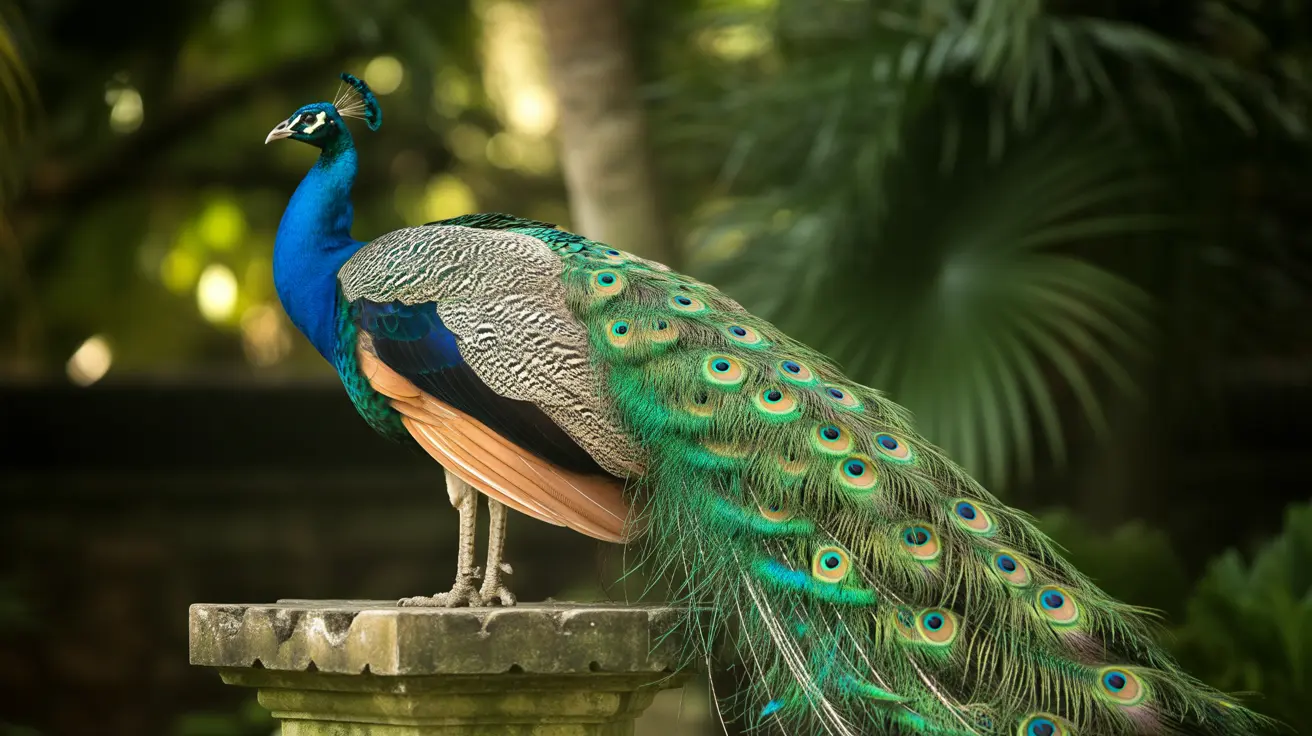The Science Behind Peacock Courtship Behavior
During courtship displays, male peacocks employ a fascinating combination of visual and mechanical effects. The bird's tail feathers vibrate at specific frequencies, creating both a mesmerizing visual display and an audible rattling sound. What makes this display particularly remarkable is the specialized microhook structure that keeps the eyespots stable while surrounding feathers create a shimmering effect.
Understanding Sexual Selection in Animals
The peacock's display represents a broader phenomenon known as sexual selection, where certain traits evolve specifically to attract mates. These ornamental features, while potentially cumbersome, serve as reliable indicators of a male's genetic quality and overall health.
Iridescent Feathers and Visual Impact
The iridescent nature of peacock feathers creates an ever-changing display of colors that captures attention from various angles. This natural light show isn't just for show - it's a sophisticated communication system that helps peahens assess potential mates. The more vibrant and numerous the eyespots, the stronger the signal of genetic fitness.
Evolutionary Role of Ornamentation
While carrying such elaborate plumage might seem disadvantageous, these ornamental features actually serve as "handicap signals." Only the healthiest, most robust males can afford to grow and maintain such spectacular displays, making tail feathers an honest advertisement of male quality.
Peacock Display Sound and Movement
The acoustic component of peacock courtship adds another dimension to their mating strategy. The distinctive sound produced by tail feather vibration creates a multi-sensory experience that helps females evaluate potential mates. This combination of visual and auditory signals demonstrates the complexity of animal communication during courtship.
Frequently Asked Questions
Why do peacocks have such large and colorful tail feathers?
Peacocks use their large, iridescent tail feathers with numerous eyespots as a visual display to attract mates. The size, color vibrancy, and number of eyespots signal the male's genetic fitness and health to peahens during courtship.
How do peacocks use their feathers during courtship displays?
Male peacocks vibrate and shiver their tail feathers at a resonant frequency to create shimmering visual effects and a rattling sound. Specialized microhooks keep eyespots stable while surrounding feathers move, enhancing the display's impact on females.
Do peahens always prefer peacocks with the biggest or most colorful tails?
While females often prefer males with longer trains and more eyespots, some studies show peahens may mate with less elaborate males as well. The exact cues females prioritize remain debated, suggesting mate choice involves multiple factors beyond just tail ornamentation.
Conclusion
This groundbreaking research helps us better understand how evolutionary processes have shaped animal courtship behaviors. The peacock's elaborate display system, combining visual splendor with acoustic elements, demonstrates that nature has multiple paths to reproductive success. Whether through strength or spectacle, different species have evolved unique strategies to ensure their genetic legacy continues.
The next time you observe a peacock's magnificent display, remember that you're witnessing not just a beautiful show, but millions of years of evolutionary refinement in action. These impressive feathers represent one of nature's most successful examples of sexual selection at work.






